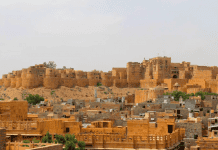Guru Purnima is commemorated by Hindus, Jains and Buddhists on the full moon day of the Hindu month of Ashad. It is a day sacred to the memory of Maharshi Ved Vyasa, the ancient saint who edited the four Vedas and wrote the 18 Puranas, the Mahabharata, and the Srimad Bhagavatam. Guru Purnima is also known as Vyasa Purnima after the great rishi Vyasa, who is said to be the pioneer of the guru shishya tradition.
On this day, devotees thank and perform a puja of their gurus and spiritual preceptors, or gurudevas. The word Guru has an interesting meaning – ‘gu’ means darkness and ‘ru’ means removal of darkness. Therefore, a guru is a spiritual preceptor, who leads his devotee from darkness towards light. People pay their respects to all teachers all over the country on this day.
This day is deeply significant to farmers as well; it indicates the beginning of the much-needed seasonal rains, when the advent of cool showers ushers in fresh life in the fields. Symbolically, this is an auspicious time to begin spiritual endeavours; thus, spiritual seekers traditionally begin intensifying their spiritual sadhana on this day.
It also marks the commencement of Chaturmas (“four months”) which, traditionally, was the time in ancient history when spiritual masters and disciples settled down in a single place to study the Brahma Sutras composed by Vyasa. This is also a time to hold Vedantic discussions. Even Lord Shiva is known to have transmitted the learning of yoga to his disciples – the saptarishis or seven sages – on this day.
It is also widely believed that Lord Buddha gave his first sermon on this day. After five weeks of achieving enlightenment under the Bodhi tree, Buddha went from Bodhgaya to Sarnath, where he gave the sermon on the full moon day or purnima. Buddhists, thus, celebrate this day to worship him.



















